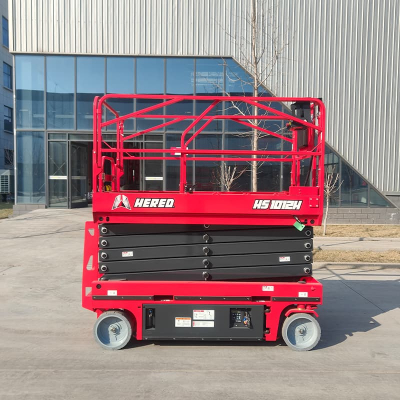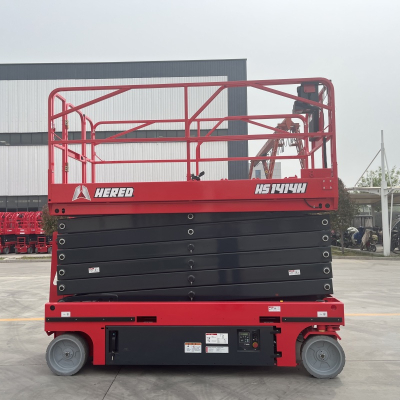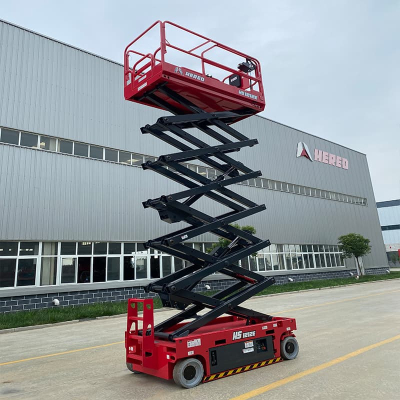Shipping and Port
In the shipping and port industry, HERED provides various types of shipping and port lifts, including scissor lifts and boom lifts suitable for the shipping and port industry.
In shipping and port operations, aerial work platforms (AWPs) are used for a variety of tasks, each requiring specific types of equipment based on the job's nature and the environment. The selection of AWPs in this industry is influenced by factors like the need for heavy lifting capacity, stability, and maneuverability in a typically rugged and dynamic environment. Here are the specific scenarios and the types of AWPs commonly used:
Cargo Handling and Container Management: Large, heavy-duty scissor lifts are often used for cargo handling and container management. These lifts are capable of lifting heavy loads and can reach the heights necessary to access stacked containers. Some models are specially designed to handle the weight and size of standard shipping containers.
Ship Maintenance and Repair: For ship maintenance and repair, including tasks like painting, welding, or general repair work, telescopic and articulating boom lifts are used. Their extended reach and flexibility are crucial for accessing different parts of a ship, especially for work on the hull or above-deck structures.
Loading and Unloading Ships: For loading and unloading operations, particularly for cargo that's not containerized, boom lifts and vertical mast lifts are employed. They provide the necessary height and precision for moving goods to and from different levels of a ship.
Dock and Warehouse Maintenance: In dock and warehouse maintenance, electric scissor lifts and boom lifts are used for tasks such as repairing cranes, maintaining dock equipment, and managing warehouse inventories. Their maneuverability and range of motion are beneficial in these environments.
Inspection and Surveying: For inspection and surveying tasks, compact boom lifts or portable aerial platforms are often utilized. These allow for efficient and detailed inspections of cargo, equipment, and infrastructure.
Emergency Operations: In emergency situations, such as for quick repairs or to respond to accidents, rapid-deploy AWPs are critical. These platforms can be quickly set up and used for a range of emergency response tasks.
Port Facility Operations: For general operations within the port facility, such as light repairs, cleaning, or signage installation, smaller AWPs like vertical mast lifts and personal portable lifts are used. These are ideal for indoor or confined spaces and for tasks that require quick and easy access to elevated areas.
Each type of AWP used in shipping and ports is selected for its ability to meet the specific demands of the maritime environment, including durability, heavy lifting capacity, and the ability to operate effectively in a dynamic, often congested space. Safety, efficiency, and adaptability to the challenging conditions of port and maritime environments are key considerations in selecting the appropriate AWP for each task. These platforms are essential in ensuring smooth and safe operations in the shipping and port industry, where handling heavy loads and navigating large structures are routine challenges.
Application products
Related Products
Submitted successfully
We will contact you as soon as possible
Close
Price Inquiry









